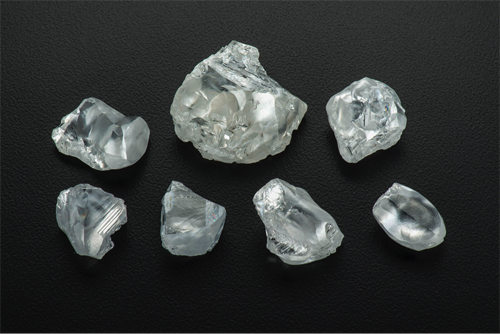
The findings of Evan Smith, were recently published in “Science” . According to Smith’s research, these extra large diamonds were created from metal, using patches of liquid iron and gas located near Earth’s core.

They’re the sparkling rocks widely believed to be a girl’s best friend, or at least a great holiday gift. While most of us are used to seeing small diamonds sized for rings, new research is shining a light on the origins of the world’s largest diamonds.
The findings of Evan Smith, who works for the Gemological Institute of America, were recently published in “Science” . According to Smith’s research, these extra large diamonds were created from metal, using patches of liquid iron and gas located near Earth’s core.
This formation is particularly noteworthy because most diamonds are formed approximately 150 to 200 kilometers, or about 93 to 124 miles, inside the Earth, near the base of continental tectonic plates. Approximately 98 percent of mined diamonds originate from this area.
Diamonds are typically formed as the result of high temperatures and pressure in Earth’s mantle on carbon-containing minerals. The process normally takes one to three billion years, with carbon dioxide being buried under the Earth heated to about 2,200 degrees Fahrenheit at a pressure of roughly 725,000 pounds per square inch and then brought to the Earth’s surface to cool.
Synthetic diamonds are created using a similar process, typically exposing graphite with a metallic solution to high pressure and high temperatures. However, especially large, naturally occurring diamonds have a different origin story. These diamonds are too large and have qualities that differentiate them from average diamonds. One example is the Cullinan diamond, which is the largest gem-quality diamond in the world.
“Diamonds like [the Cullinan] have characteristics that aren't quite the same as other kinds of diamond,” said Smith in a statement. “For years, geologists have wondered if maybe they formed in a slightly different way or if they came from a different part of the mantle. It’s been a lingering question that’s been really hard to tackle.”
By studying diamonds that were of a similar type and quality, usually with pieces of material trapped inside the diamond called inclusions, Smith was provided with clues about how the diamonds formed and where they’re formed. He determined that these larger diamonds come from the convecting mantle, which is about 360-750 kilometers, or 224-466 miles, inside the Earth.
Smith came to the conclusion that these diamonds were formed in an environment that containing bits of iron and nickel, growing with liquid metal which is particularly skilled at dissolving carbon. It is unclear where the carbon used comes from. Smith hypothesizes that the carbon is pulled down from the Earth’s crust by the tectonic plates. Volcanic eruptions bring the diamonds to the surface.
Smith plans to continue studying gems with inclusions as a means to see how the deeper layers of Earth operate.